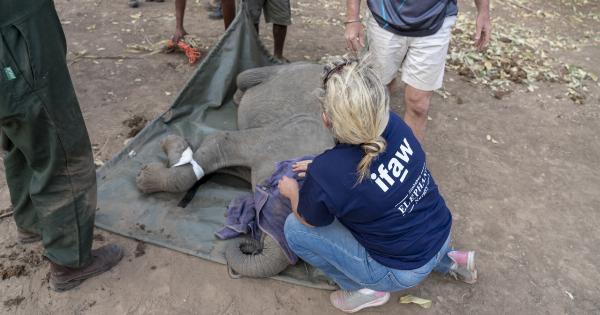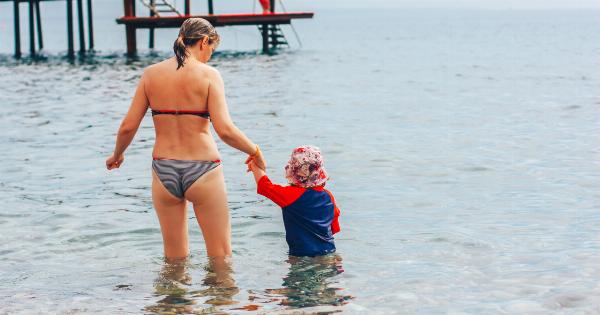Sneeze drowning, also known as secondary drowning or dry drowning, is a rare but potentially life-threatening condition. It occurs when a person inhales water into their lungs, usually after a near-drowning experience.
While sneeze drowning is rare, it is important to be aware of the risks and take necessary precautions to keep yourself and your loved ones safe.
Understanding Sneeze Drowning
Sneeze drowning can happen to anyone, regardless of age or swimming ability. It is not limited to pool or beach accidents; it can occur in bathtubs, hot tubs, or even shallow bodies of water.
When a person inhales water into their lungs, it can cause inflammation and swelling, making it difficult for oxygen to reach the bloodstream. This can lead to respiratory distress, and in some cases, even death.
Recognizing the Symptoms
Recognizing the symptoms of sneeze drowning is essential for prompt medical intervention. While some symptoms may be immediate, others can take hours or even days to appear. The common symptoms of sneeze drowning include:.
- Coughing or gasping for breath
- Difficulty breathing or shortness of breath
- Chest pain
- Extreme fatigue or sleepiness
- Blue lips or skin
- Change in behavior or mood
- Vomiting
If you or someone you know experiences any of these symptoms after being in or around water, seek medical help immediately.
Preventing Sneeze Drowning
While sneeze drowning is a rare occurrence, there are several preventive measures you can take to reduce the risk:.
1. Supervise Water Activities
Never leave young children unattended around water. Whether it’s a bathtub, swimming pool, or any other water body, an adult should always be present and actively supervising.
Avoid distractions like phone calls or reading when children are in or near water.
2. Teach Water Safety
Teaching children and adults about water safety is crucial in preventing sneeze drowning. Teach them basic swimming skills, such as floating and treading water, and emphasize the importance of never swimming alone.
Educate them about the dangers of sneeze drowning and how to recognize the symptoms.
3. Ensure Proper Pool Safety
If you have a pool at home, make sure it is properly secured with a fence and self-latching gate. Install pool alarms that can alert you if anyone enters the pool area without your knowledge.
Keep rescue equipment, such as a lifebuoy or reaching pole, nearby for emergencies.
4. Wear Life Jackets
When boating or participating in water activities, always wear a properly-fitted life jacket. Life jackets provide buoyancy and can keep you afloat even if you become unconscious or fatigued.
5. Be Cautious of Waves and Currents
If you’re swimming in the ocean or any body of water with waves or strong currents, be cautious. These conditions can increase the risk of inhaling water while swimming or being knocked off balance.
Familiarize yourself with the local water conditions and only swim in designated areas with lifeguards present.
6. Know CPR and First Aid
Having knowledge of CPR (cardiopulmonary resuscitation) and first aid can be lifesaving in emergency situations. Enroll in a certified CPR course and ensure you have a well-stocked first aid kit readily available at home or during outdoor activities.
7. Avoid Alcohol and Drugs
Alcohol and drugs impair judgment and decrease coordination, increasing the risk of accidents and mishaps in and around water. Avoid consuming alcohol or using recreational drugs when you plan to swim or engage in water activities.
8. Stay Hydrated
Staying hydrated while participating in water activities is important for overall well-being. Dehydration can lead to fatigue and increased susceptibility to accidents. Drink plenty of water before, during, and after swimming or being in the sun.
9. Educate Yourself about Sneeze Drowning
Stay informed about sneeze drowning and its symptoms. Understanding the risks can help you take appropriate precautions and respond quickly when someone shows signs of distress after being in or around water.
10. Be Prepared for Emergencies
Keep emergency contact numbers readily accessible and ensure you have a plan in case of an emergency. Act swiftly and calmly in the event of a suspected sneeze drowning incident to maximize the chances of a positive outcome.
Conclusion
While sneeze drowning is a rare occurrence, it is crucial to be aware of the risks and take measures to prevent it.
By following the preventive steps outlined above and staying vigilant around water, you can significantly reduce the chances of sneeze drowning and keep yourself and your loved ones safe.































